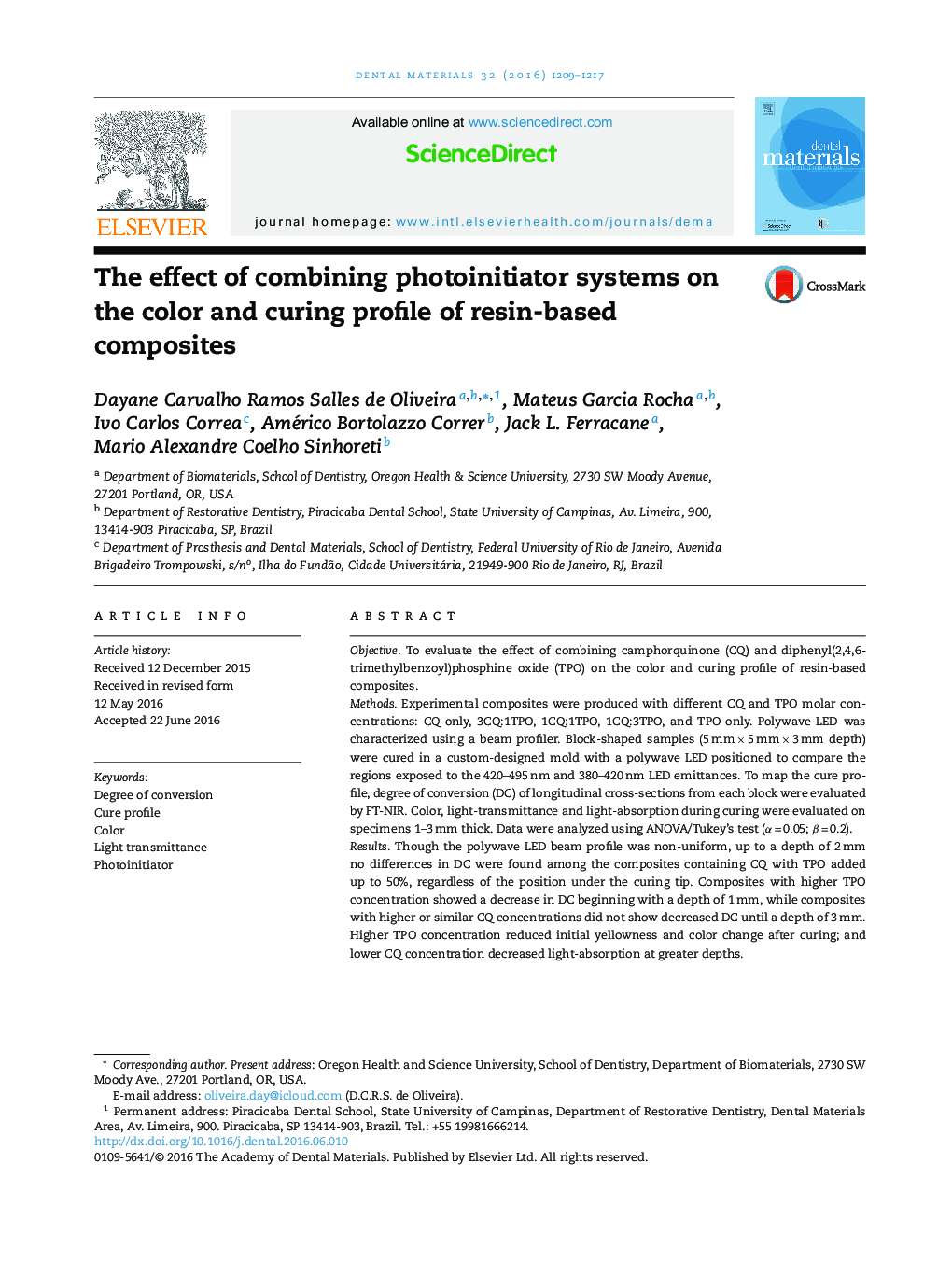| Article ID | Journal | Published Year | Pages | File Type |
|---|---|---|---|---|
| 5433175 | Dental Materials | 2016 | 9 Pages |
â¢The non-uniform nature of the beam can affect the curing profile of composites.â¢TPO can reduce the yellowness without affecting cure efficiency of CQ-composites.â¢Resin-based composites containing only TPO resulted in reduced depth of cure.
ObjectiveTo evaluate the effect of combining camphorquinone (CQ) and diphenyl(2,4,6-trimethylbenzoyl)phosphine oxide (TPO) on the color and curing profile of resin-based composites.MethodsExperimental composites were produced with different CQ and TPO molar concentrations: CQ-only, 3CQ:1TPO, 1CQ:1TPO, 1CQ:3TPO, and TPO-only. Polywave LED was characterized using a beam profiler. Block-shaped samples (5 mm Ã 5 mm Ã 3 mm depth) were cured in a custom-designed mold with a polywave LED positioned to compare the regions exposed to the 420-495 nm and 380-420 nm LED emittances. To map the cure profile, degree of conversion (DC) of longitudinal cross-sections from each block were evaluated by FT-NIR. Color, light-transmittance and light-absorption during curing were evaluated on specimens 1-3 mm thick. Data were analyzed using ANOVA/Tukey's test (α = 0.05; β = 0.2).ResultsThough the polywave LED beam profile was non-uniform, up to a depth of 2 mm no differences in DC were found among the composites containing CQ with TPO added up to 50%, regardless of the position under the curing tip. Composites with higher TPO concentration showed a decrease in DC beginning with a depth of 1 mm, while composites with higher or similar CQ concentrations did not show decreased DC until a depth of 3 mm. Higher TPO concentration reduced initial yellowness and color change after curing; and lower CQ concentration decreased light-absorption at greater depths.SignificanceThe combination of CQ with TPO added up to 50% reduced the yellowness and color change of composites after curing without affecting cure efficiency up to a depth of 2 mm.
